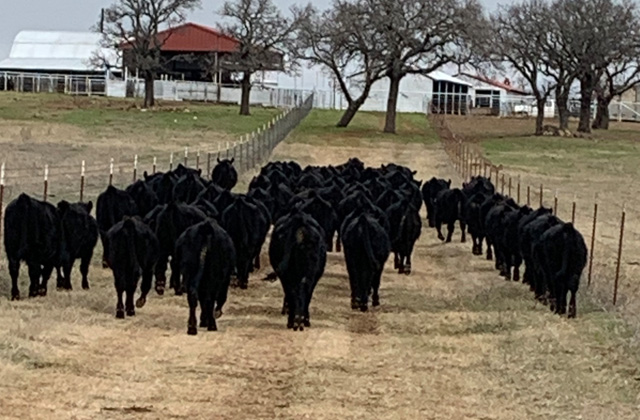Farm & Ranch
Meanwhile, Back at the Ranch…

By Rayford Pullen | [email protected]
Is spring yet? If you are like me, this seems like the longest winter we have ever had. When spring does arrive in full force, it will be a photo finish regarding our hay inventory and the emergence of green grass.
With the winter we have had, regarding costs, this has also been the most expensive when it comes to the price of hay and feed. Happiness is winter in our rearview mirror around here.
Spring will arrive this month in most parts of Texas, and with it will come new calves and breeding decisions.
Those cows that made it through the winter are probably in fair to decent shape and will need a month or so of great grazing to get back in shape, while they are also nursing a calf.
In the case of first calf heifers, they are trying to grow and put on weight without their permanent incisors.
These young females are asked to do a lot and may need a little extra help, nutrition wise, to get rebred on time and continue calving during the target months. Around here, if a heifer is born in February or March, we expect her to calve at age two in the same month she was born. It does not always work out, but that is our goal.
With bull turn out for spring calving cows and heifers being mid-April to mid-May, we certainly hope and expect them to be gaining weight and be in shape to conceive as early in the breeding season as possible.
To read more, pick up a copy of the March issue of NTFR Magazine. To subscribe call 940-872-5922.
Farm & Ranch
Hazards of Backyard Poultry

By Barry Whitworth, DVM
Having backyard poultry is a popular agriculture enterprise. According to the United States Department of Agriculture, 0.8 percent of all households in the United States have chickens. People keep chickens for a variety of reasons with table eggs being one of the more common reasons.
Unfortunately, some of these poultry producers are not aware of the hazards that come with keeping poultry because many times they carry pathogens but appear healthy.
Chickens are carriers of several zoonotic diseases. These are diseases that can be passed from animals to humans. According to a recent survey in Pennsylvania, a majority of backyard poultry producers were aware of the dangers of avian influenza. However, this study also revealed that far fewer producers were aware of the risk of possible exposure to Salmonella and Campylobacter.
The lack of knowledge about the hazards of raising poultry likely contributes to the continued issues of Salmonella outbreaks associated with backyard poultry. In 2023, the Centers for Disease Control and Prevention reported 1,072 illnesses of Salmonella linked to backyard poultry, and 272 of those patients required hospitalization. Oklahoma reported 43 individuals with the disease.
To read more, pick up a copy of the April issue of NTFR magazine. To subscribe by mail, call 940-872-5922.
Farm & Ranch
Ag Elsewhere: Wyoming

By Tressa Lawrence
Babies are tucked away in every nook and cranny. Many ranchers across Wyoming have baby animals popping up all over this time of year.
Farm & Ranch
Ag Elsewhere: Montana

By Lindsey Monk
Another load of grain in to keep feeding the calves until the green grass can really start popping.
-

 Country Lifestyles1 year ago
Country Lifestyles1 year agoScott & Stacey Schumacher: A Growth Mindset
-

 Equine7 months ago
Equine7 months agoThe Will to Win
-

 Country Lifestyles7 years ago
Country Lifestyles7 years agoStyle Your Profile – What your style cowboy hat says about you and new trends in 2017
-

 Country Lifestyles4 years ago
Country Lifestyles4 years agoAmber Crawford, Breakaway Roper
-

 HOME7 years ago
HOME7 years agoGrazing North Texas – Wilman Lovegrass
-

 Country Lifestyles7 years ago
Country Lifestyles7 years agoDecember 2016 Profile, Rusty Riddle – The Riddle Way
-

 Country Lifestyles8 years ago
Country Lifestyles8 years agoJune 2016 Profile – The man behind the mic: Bob Tallman
-

 Outdoor9 years ago
Outdoor9 years agoButtercup or Primrose?






